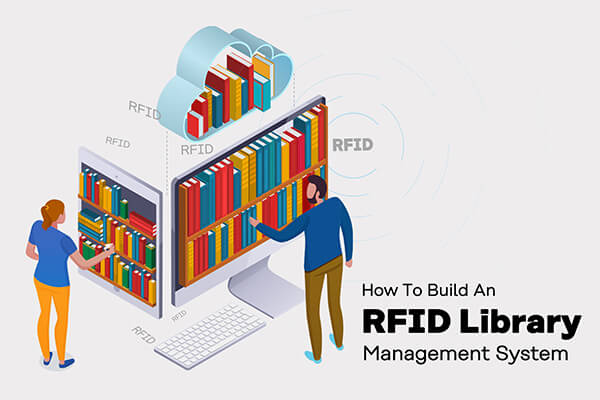Libraries are now adopting the use of RFID technology to improve the speed and accuracy of circulation and shelving functions. This not only frees the library staff to provide direct service to its users but also helps to protect a library’s collection and ensures the community gets the most value out of the library. However, installing an RFID library management system is a huge investment whose benefits can last for a decade or more. So, what are the requirements?
What is the RFID library management system consist of?
An RFID Library Management System (LMS) is a system based on both hardware and software solutions. The hardware requirements are; a computer system, microcontroller, Bluetooth module, liquid crystal display (LCD), and an RFID reader. The software requirements are; Visual Basic, server drivers installed, MS Windows, structured query language (SQL), database (SQL, SQLite, or MS Access) as the back end, and Windows Presentation Foundation (WPF) as the front end. The features of the system are RFID enabled for cataloging books, Bluetooth enabled for flexibility in searching information, a centralized database, user identification through their RFID tags, and security features including a login procedure with password protection for the members as well as the librarian.
How does the RFID library management system work?
The microcontroller provides the main control of the device operations. The RFID reader reads identification cards (RFID cards) using radio waves. The reader continuously transmits a 125 kHz carrier signal using its antenna. The tag embedded on the card is powered on from the carrier signal. Once it’s on, it transmits an encoded signal containing the data stored on the card back to the reader. To extract the tag’s unique identity, the encoded signal is picked up by the reader’s antenna, filtered, and processed on the embedded microcontroller. The identity can be matched against the records stored on the reader. The microcontroller directly receives the signal from the RFID card reader through its interface ports connection. From this, it sends the digital signal to the Bluetooth module where a connection with the host computer is established, and then information is transmitted over the wireless channel.
The Bluetooth-enabled host computer receives the information through an onboard application that transmits the data using RS232 protocol, and the connection to the PC is managed by the software running on the PC. An LCD module displays information such as acknowledgment messages and device status. When the device is programmed, it sends a report to the screen any time a card had been read. The messages displayed depend on the current model of query i.e. if the shelf number of a book is needed to be known. With this, users can quickly move or sort the book to its correct shelf. With this, multiple books on the shelf can be scanned through and read, and also, books on the shelf that don’t belong to the shelf will be displayed on the LCD screen.
In programming the microcontroller, the C programming language is used. This programming language is widely used because it gives maximum control and efficiency to the programmer. The Windows Presentation Foundation (WPF) framework supports a very high GUI control design that manages the connection between the GUI and the database through queries executed against the database and the retrieval of query results.
Nexqo is a professional RFID hardware provider with more than 10 years of experience in the RFID industry. Click here to learn how the RFID label works.
You can also click here to learn more about the products that you can use in your project. If you are not sure, welcome to contact our sales experts any time.
.png)
